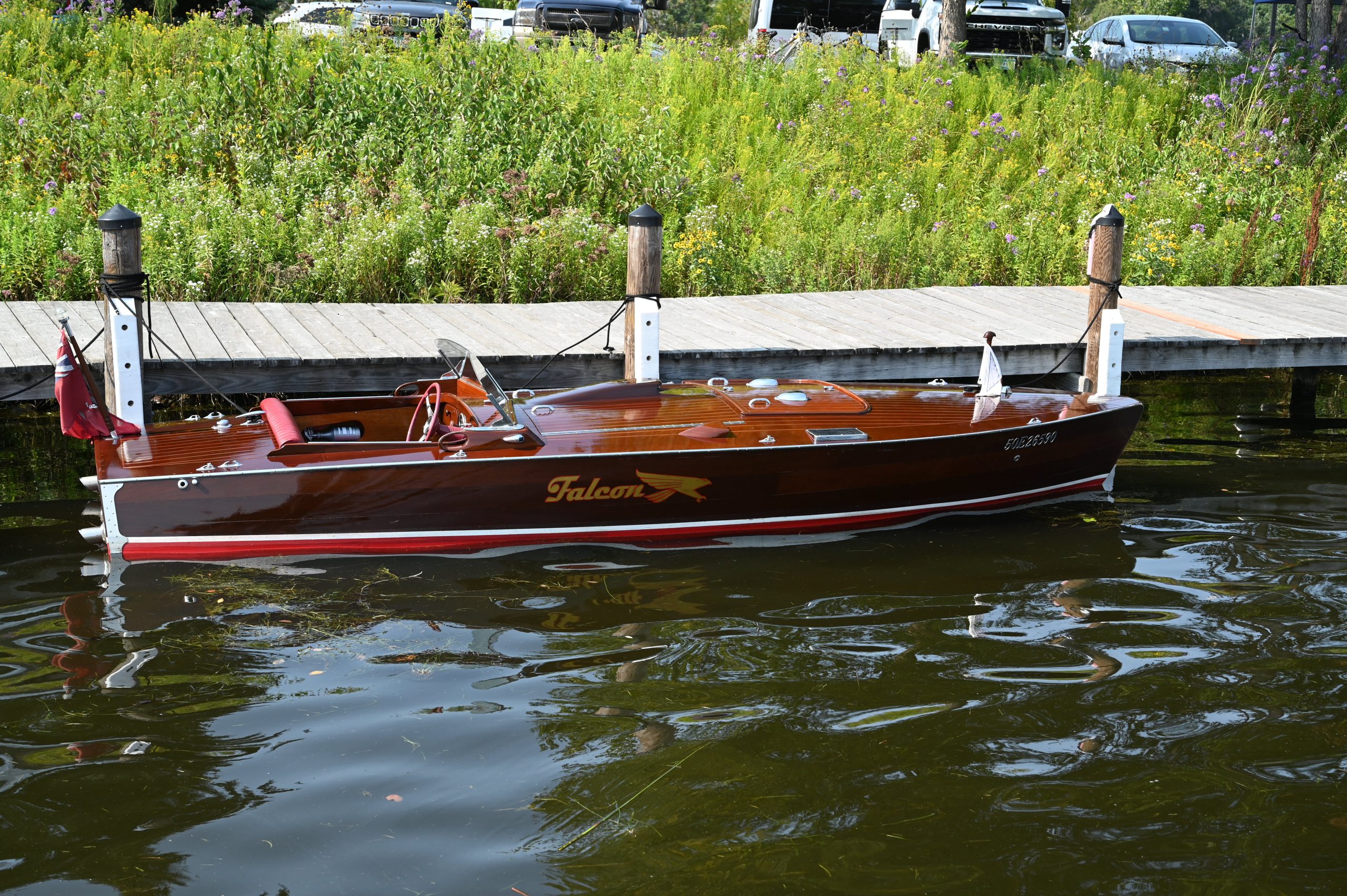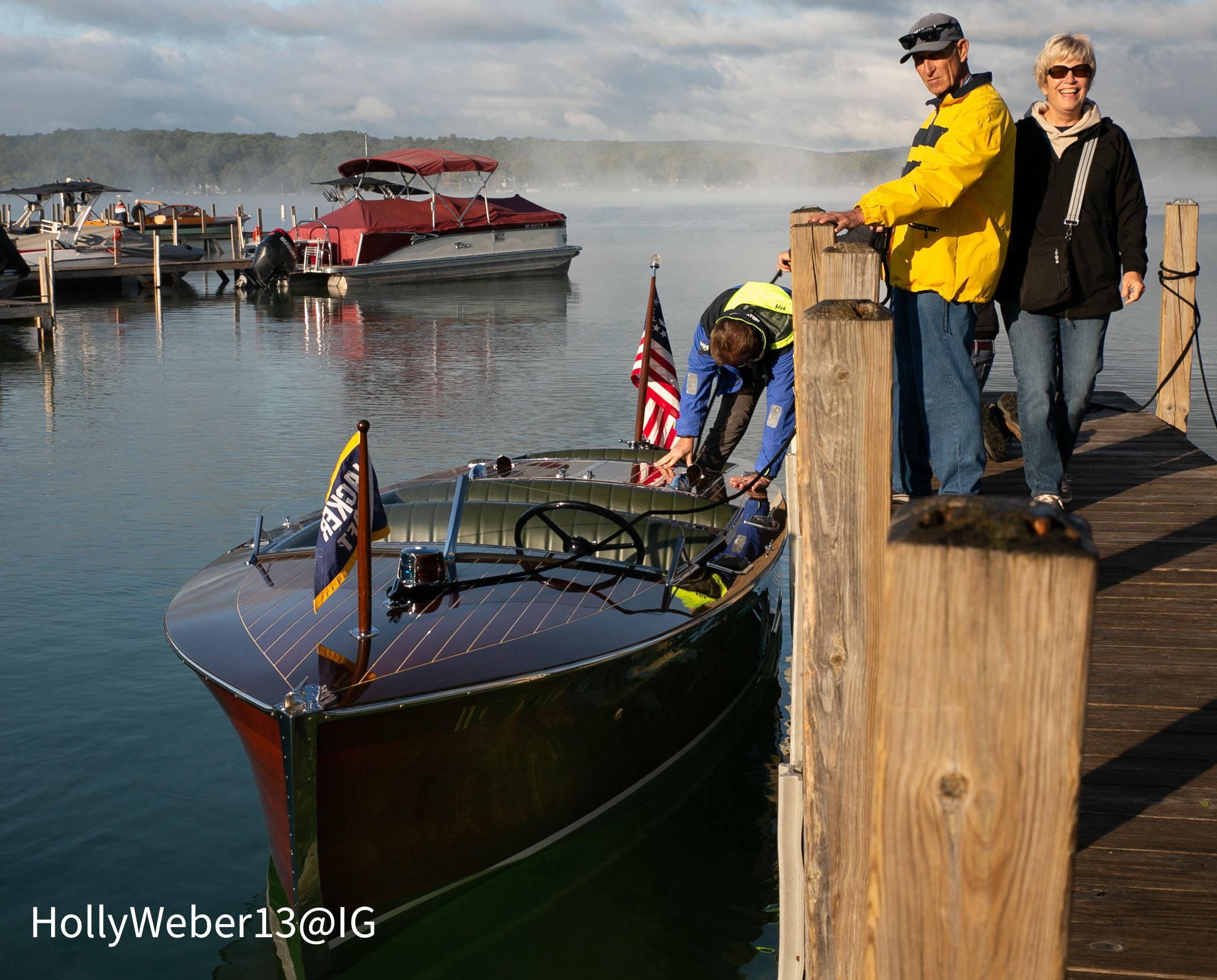By Tom Flood, Michigan & Sunnyland Chapters
John Hacker’s primary interest was in designing and building wooden boats. John was born in 1877 in Detroit, Michigan. He spent his boyhood days in Detroit, where he roamed the many boat yards in his spare time analyzing the design of the wooden craft of that era. His dream was to someday design and build the finest wooden pleasure boats humanly possible. Years later he would reach both goals.
 Pleasure boats of the 1900 era were all narrow, round bottom launches, which plowed through the water instead of planing over it as we do with our craft. John worked many years by attending night school and through correspondence to become an accredited marine designer while working at his father’s business as a bookkeeper.
Pleasure boats of the 1900 era were all narrow, round bottom launches, which plowed through the water instead of planing over it as we do with our craft. John worked many years by attending night school and through correspondence to become an accredited marine designer while working at his father’s business as a bookkeeper.
John’s first major task in boat design was to try to solve the problem of “squatting,” which occurred with all the canoe-stern shaped power boats of the 1900s. He reasoned, if his boats were going to go fast, they would have to “plane” rather than plow through the water. As a test craft to prove his new theories, he built one 30-foot runabout, which pioneered quite a few new innovations.
The boat has its prop mounted under the transom and its rudder and a strut used to position the shaft into place. In 1904, he designed Au Revoir, the fastest boat of the time. He then joined forces with L.L. Trip in Watervelit, New York and formed the Hacker Boat Company. He was fascinated with speed and designed Kitty Hawk, which was tested at speeds over 50 MPH. After encountering health problems, he sold his interest in the company to his partner. His designs have led to meany advances that today’s boat owners take for granted.
- Photo credit: Holly Weber.
John founded the Hacker Boat Company in 1914 and was very successful with the design of the Belle Isle Bearcat, sold by Gregory’s of Belle Isle. Famous owners included Edsel Ford and J.W. Packard.
By 1923, Hacker Boat had moved from Detroit up to Mount Clemons, Michigan, and partnered with S.D. McCready who became treasurer of the company. The company enlarged the physical plant twice between 1925 and 1928, and it ultimately reached 35,000 square feet of manufacturing space. Sales that year were $450,000 but dropped to $427,000 in 1930 because of the Depression.
The King of Siam was in the market for a high-speed commuter, which Hacker built in 1930. Specifications included “the finest construction, a commuting speed of 55 MPH and limited cruiser accommodations.” The boat was powered by a Packard 860 HP engine. Cox and Stevens of Detroit certified her speed at an average of 61.34 MPH over four runs.
For more on Kitty Hawk, read the Race Boat History column in the Fall 2020 issue of ACBS Rudder, available only to ACBS members at MyACBS.org.




Tom Flood is known by many as “Mr. Hacker” for his knowledge of Hacker Craft boats and their history. He has graciously shared that knowledge with many during restoration of their boats.
Thank you, Tom. I love your writings on John Hacker, the company, and the boats. Ever thought of writing a book?
Again, thanks for the info.